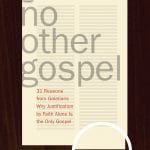Book reviews are funny things. “A tour de force,” “You must read this book!” And so the phrases continue. I am a little reluctant, therefore, to say that John Jefferson Davis, Professor John Jefferson Davis of Gordon-Conwell Theological Seminary, has written a book that deserves to be read by pastors of all theological stripes, but he has! In Worship and the Reality of God: An Evangelical Theology of Real Presence, Davis provides the church not simply with a critique of our major weaknesses (which he does with theological acuity), but he also offers perspectives to help us regain our ontological bearings. Such ontological realignment (i.e., our understanding of reality) will have a radical effect on our worship and life together as the people of God. This book is one of the most spiritually and academically stimulating books I have read in a long time.
Davis’s working premise is, “The fundamental issue is the recovery of the centrality and reality of God in the worship and life of the evangelical church generally: Jesus Christ is risen from the dead, Jesus Christ is alive to day, and is present here with us in the power of the Holy Spirit to enjoy communion with his people” (12, italics his). What follows is the outworking of this “theology of real presence.”
Competing Ontologies
In the introduction, Davis gives us a broad view of the evangelical worship landscape. Although not all will agree with what he sees as the strengths of the evangelical church (preaching and evangelism), his identification of six areas of deficiency in the American evangelical subculture’s theology and practice of worship are compelling:
(1) a deficient understanding of the importance and priority of worship, (2) a deficient understanding of the nature of worship, (3) a deficient understanding of the participants in worship, (4) a deficient understanding of the elements of worship, (5) a deficient understanding of the “ontologies” (understandings of reality) of modernity and postmodernity and how they undermine true worship, and (6) a deficient understanding of the need to learn new behaviors and new “doxological skills” for the enjoyment of true worship (13).
Davis evaluates three competing ontologies: (1) scientific materialism, (2) digital virtualism, and (3) Trinitarian supernaturalism. Before the reader concludes from the early part of the introduction that Davis is too philosophical and abstract, I would strongly encourage endurance. Keep in mind that “ontologies” are simply theories of reality, how we perceive reality.
He then asks: “Next Evangelicalism: Where Do We Go From Here?” In answering the question, Davis manages to put just about everybody out of sorts:
The next evangelicalism, the outlines of which I can only dimly imagine, would have some similarities with the emerging church, but with a more robust commitment to doctrinal orthodoxy and biblical authority. This next evangelicalism would be Reformed in its soteriology, Trinitarian in its understanding of theology, doxological in seeing worship as the highest priority of the church, charismatic in its affirmation of the gifts and presence of the Spirit in the life of the congregation, and liturgical in its ancient-modern form of worship. . . This would be a church marked by the attributes deep, thick, different.” (31–32)
But before this eclectic answer, loaded with across the board offensive elements, is dismissed, Davis must be allowed to make his case. Not everyone will agree with his outlines for “next evangelicalism.” But he is provocative to say the least.
Chapter two, “God, the Church, and Self” is simply excellent. The theology, the interaction with philosophy and modern culture and the application is incredibly thought-provoking. As I read this chapter, I kept thinking to myself, “This would make an outstanding sermon series!” Davis summarizes:
Renewal in evangelical worship involves a new consciousness, a new mindset, a new ontological way of thinking about God, the church and the self. In this new mindset, God is seen, by the eyes of faith, as weighty, as holy, as joyful, as beautiful, as relational and as available-that is, really present. (74–75)
He asserts that the problem with most evangelical worship services is that our God is too light, our vision of the church is too low, and our view of ourselves is too high. The result is worship that is too shallow. Davis shows how intellectual and cultural forces have influenced our view of God and then opens up a biblical view of God that is soul-stirring. (God is heavy, holy, joyful, beautiful, relational and available—that is, really present). He then moves to our view of the church. “The being of the church, as the context of worship, has suffered inattention and neglect” (62). Davis argues that the distinguishing characteristic of the church, the real church, is the presence of the triune God. His insights into ecclesiology are exhilarating.
Chapter three, “Reality in Worship,” deals with various influences that have impoverished our sense of God’s reality in our worship. We have demystified God. Although some, (I for one) would not be in whole-hearted agreement with his assessment of the Reformation’s contribution to this impoverishment, I do suggest that we take to heart the ways we have demystified God and lightened the weight of God’s presence in our worship. Davis then contends that revivalism and decision-making have turned the focus of the worship from God to man’s decision (i.e., the altar call or invitation).

Worship and the Reality of God: An Evangelical Theology of Real Presence
John Jefferson Davis
Worship and the Reality of God: An Evangelical Theology of Real Presence
John Jefferson Davis
Is God missing from our worship? Obstacles to true worship are not about contemporary or traditional music, electronic gadgetry or seeker sensitivity. Rather it is the habits of mind and heart, conditioned by our surrounding culture, that hinder our faith in the real presence of the transcendent God among his people. Sensing a real need for renewal, John Jefferson Davis offers a theology of worship that uncovers the most fundamental barriers to our vital involvement in the worship of our holy God.
Davis argues that the ontology of the context of worship is “kingdom time” and “kingdom space.” This theme is powerfully developed with Scripture and then segues into the fourfold pattern of biblical worship: gathering, ministry of the Word, ministry of the table, and dismissal. Davis argues that contemporary evangelicalism has collapsed the model and turned worship into something about us. In contemporary worship we have mistakenly thought that we are doing something and have profoundly forgotten that God is doing something. He is the central Actor. He beautifully reminds us of the power of the call to worship, invocation, and benediction.
Davis then moves to a very interesting discussion on the Eucharist. His criticism of the contemporary church being “casual and sloppy” is much appreciated. He argues passionately for a recovery of a more “meaningful and frequent experience of the Lord’s Supper in the life of the evangelical church” (114). His premise is that we need to rediscover a central reality in the worship of the New Testament and early church: “The real personal presence of the risen Christ who meets his people in joyful fellowship around the table” (114). Davis develops his thesis in four steps. First, he gives a fine overview of the issue in church history and how we embraced a “real absence” view. Second, he looks at New Testament, finding evidence for what he calls “the real personal presence.” He then explores some developments in ecumenical theology and philosophy of language that he finds helpful in the debate. Finally, he sets for some “practical advantages” to a real, personal presence understanding and more frequent communion.
His historical assessments are intriguing, especially as he traces the diminished role of the Supper in our worship. He also presents some stimulating work on what “do this in remembrance of me” actually means. His appeal to Michael Polyani and “focal and subsidiary awareness in human action” is also helpful in pointing out that our focus in the Supper shifted to the physical elements themselves, instead of Christ. “The eyes of faith are not so much looking primarily at the elements as through and past the elements to see, in a focal sense, the risen Christ who is present at the table by virtue of his ‘Holy Spirit avatar’ or ‘Spirit-hologram’” (159). As a Baptist who practices monthly communion, I found his treatment stimulating and provocative. There is much to think about here. Although not completely missing, I wish he had developed the connection between Word and sacrament a little more. His treatment of the Table will be too sacramental for some and not sacramental enough for others.
In his concluding chapter, “From Ontology to Doxology” he considers how to apply his proposal at the congregational level. His first suggestion is to teach this new ontological understanding from the different angles: worship, the Trinity, the presence and gifts of the Spirit, the true identity of the church. He even goes so far as to suggest sermon texts that relate to the different subjects. His challenge “From Niche-Market Church to Deep, Thick, Different” is a powerful breath of fresh air (180–181). He calls for a multigenerational vision of the church. His suggestion that this new ontological framework can be implemented by “ancient-modern blended worship” (185–193) is cautious and balanced. Davis then makes a plea for the reality and presence of the Spirit in our churches. He argues for emphasizing the gifts and becoming more aware of the Spirit’s presence. Then he moves to music and once again argues for a multigenerational vision of the church that is expressed in worship. He wraps up with an appeal for weekly communion as the natural culmination to this blended, ancient-modern approach.
Analysis
Overall, the book is exciting and stimulating as it points us to God and the powerful, ultimate reality of his presence. Davis challenges us to rethink our ontology in light of the ultimate reality of the Triune God. For all its strengths, from my perspective, I believe there is one weakness. In Davis’s work there is little discussion about the preaching of the Word as mediating the presence and power of God. The Word preached in the power of the Spirit brings us into an encounter with God which is profound, even tasting the powers of the age to come. Yet Davis barely explores this part of worship (e.g. p. 98). He has a good comment, but it is in passing (“God speaks through the biblical texts as they are read; God himself is speaking through the words of the preacher,” 174). He thinks evangelical preaching is pretty good (10). For all the marvelous strengths of this book, it would have been good to hear Davis articulate the role and the relationship of biblical preaching in the power of the Holy Spirit.
This is a book that pastors, elders, and sessions should pick up and read. It is a book that worship leaders should read. It is challenging to say the least. The implications are far-reaching. The observations are astute and important. As I said at the beginning, book reviews are funny things. But with all sincerity, this is an important book.




































